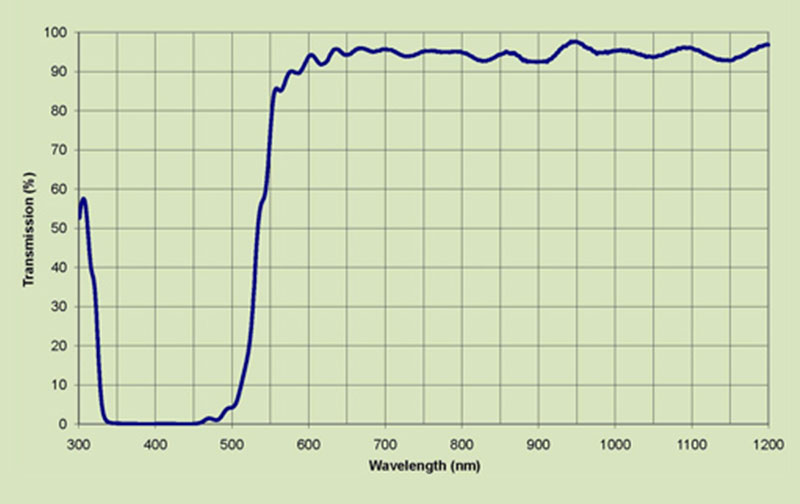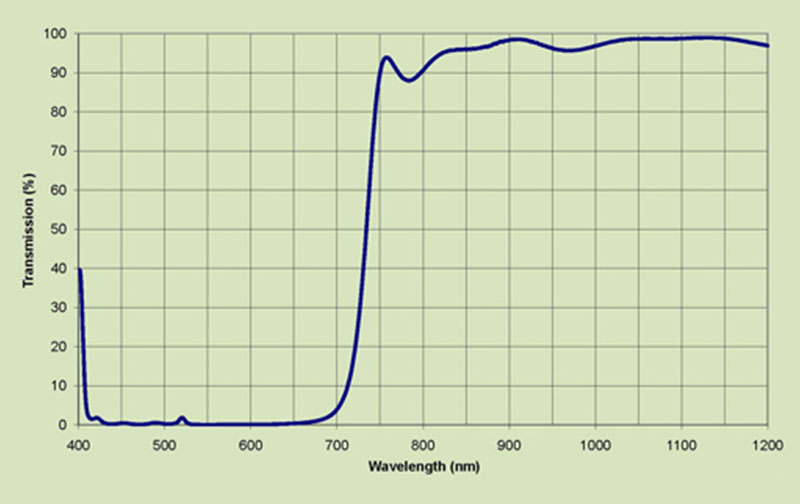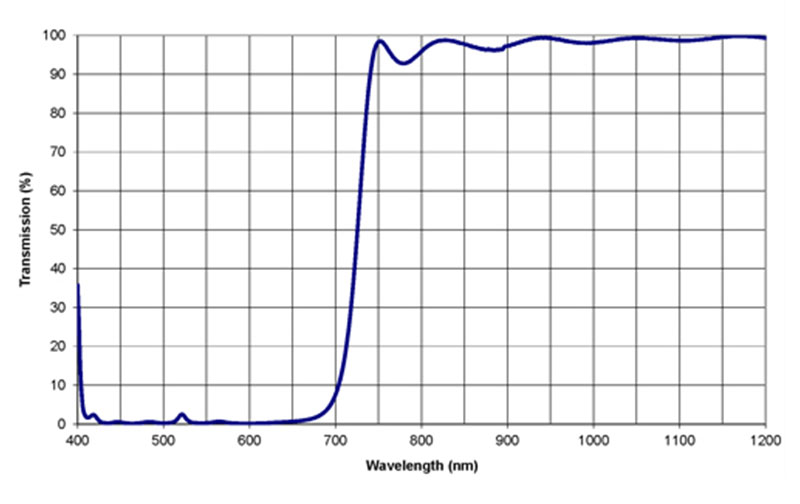Cold Mirrors
Abrisa Technologies provides a line of cold mirrors that reflect Ultra Violet (UV) or visible energy while transmitting the infrared (heat energy). Cold mirror coatings are vacuum deposited multi-layer dielectric films that can operate in temperatures of ≥400°C and are durable and easy-to-clean.
The glass substrate used for our cold mirrors is SCHOTT Borofloat®, a versatile borosilicate glass substrate with excellent thermal properties. Thickness availability is 1.1mm, and 3.3mm. Cold mirror sizes are available up to 27” diameter. Custom sizes and thicknesses and specialty designs are available upon request.
Features
- Operating Temperature = 300°C (typical)
- Durable and Easy-to-Clean
- High transmission for the near infrared light range (heat)
- High reflection of the visible
- Heat resistant borosilicate glass substrates – SCHOTT Borofloat®
- Thin film dielectric multi-layer coating
- Standard angles of incidence are 0 and 45 degrees
Specifications
UV Cold Mirror
This cold mirror is specially designed to reflect more than 95% average of ultra-violet rays from 350-450nm and transmit more than 90% average 550-1200nm at 45 degrees angle of incidence. Custom angles of incidence can be designed to specification.
CM-VS-STD 45 Degree Cold Mirror
This cold mirror is designed to operate at a 45 degree angle of incidence. It reflects the visible spectrum and transmits the heat (infrared). The average reflectance is greater than 95% from 425-650nm. Transmission is more than 85% average from 800-1200nm. These filters are commonly coated for normal incidence applications as well. Custom angles of incidence can be designed to specification.
CM0-VS-STD 0 Degree Cold Mirror
This cold mirror filter is designed to operate at 0 degrees angle of incidence. It reflects the visible spectrum and transmits heat (infrared). The average reflectance is greater than 95% from 425-650nm. Transmittance is more than 85% average from 800-1200nm.These filters are commonly coated for normal incidence applications as well. Custom angles of incidence can be designed to specification.


